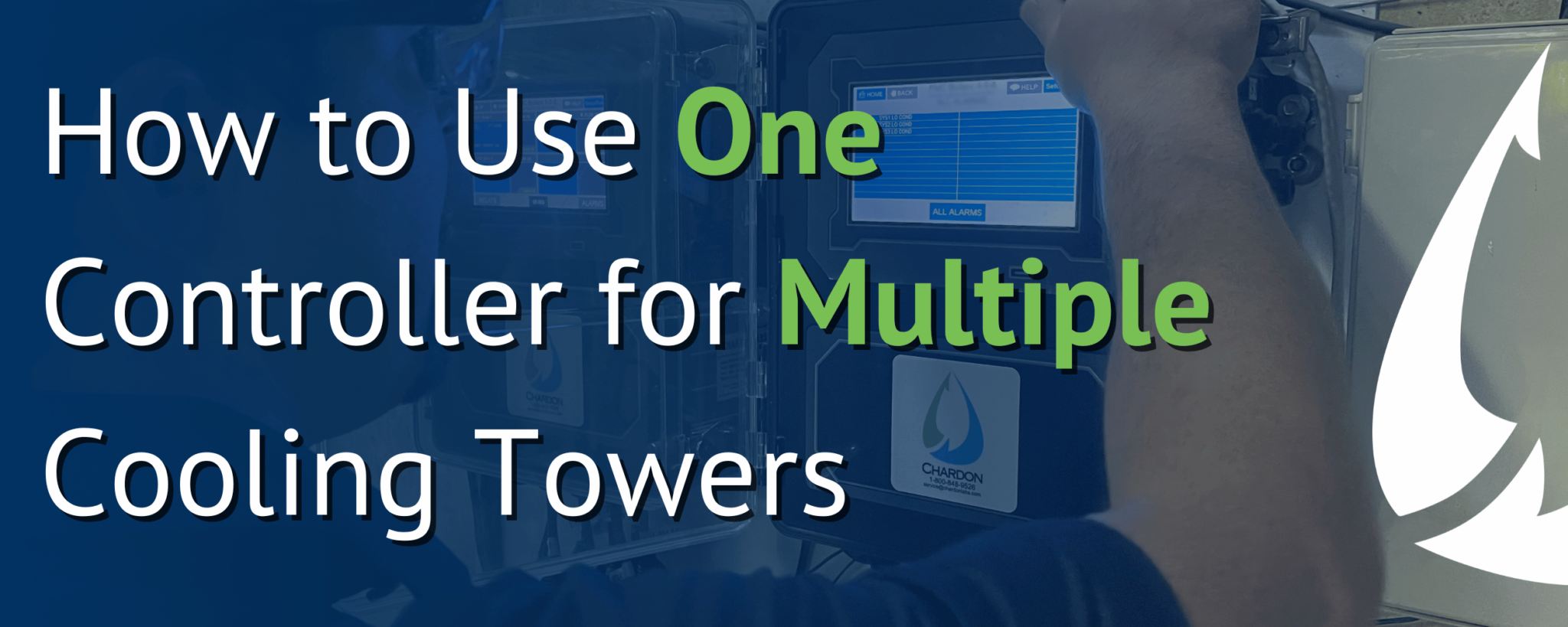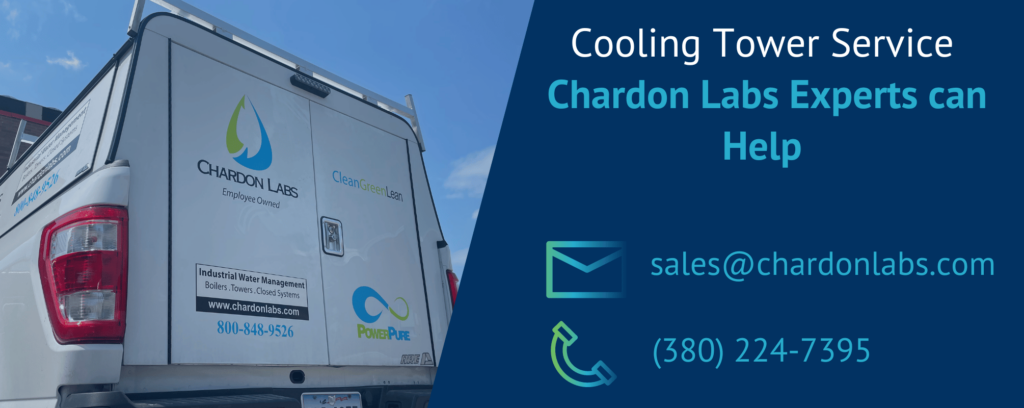
February 9, 2024
Cooling tower controllers are advancing in technology and flexibility. You may be able to use multiple cooling towers with one controller. Other equipment such as inhibitor pumps, backflow preventers, and flow switches may or may not only need one for multiple cooling towers. This article will help you make a cooling tower cooling strategy that makes sense for your equipment.
There are times when it is better to manage two controllers with one controller instead of separate controllers. Depending on the equipment specification and your needs, one controller can cost less than two controllers. Remote Communications is a good example of the higher cost of two separate controllers. They require two separate modems and additional equipment to manage their connection to the outside world. A single controller can manage the water chemistry for two towers more efficiently and save you the cost of a second controller.
Provided the make-up source to the two towers is a common pipe at some point, this design provides good inhibitor levels in both systems even in lead-lag situations. A turbine meter is best, but a contact head meter set for 10 gallons per contact will suffice. A small contact interval is necessary to ensure uniform treatment levels by frequently (every ten gallons) adding a little inhibitor rather than adding an inhibitor less often (every hundred gallons for instance). The smaller the contact volume, the more uniform the treatment level will be in the two towers.
A backflow preventer is a check valve installed on potable water piping between a contamination source and the rest of the potable water distribution system. A backflow preventer is required by code any time potable water could become contaminated. In this case, the source of contamination would be an inhibitor pumped into the make-up line. Suppose the pump ran when the make-up float valves were both closed. Inhibitors could backflow into the potable water piping and appear in drinking fountains or other places where we do not want it to appear.
Current sensing relays are used to sense when the tower pump is running. These devices are used to tell the controller when there is flow and to enable and disable the Brominator solenoid valves. If data logging no-flow events is necessary, add a digital input node option.
The flexibility of different networking design availability means there are always alternatives. If the above design does not address all the demands of the system, expanding the controller to 8 relay outputs should solve the problem. By configuring an alarm relay that switches on the no-flow status from the -digital input node, relays will lock out during periods of no-flow. The additional relays also allow separate control of inhibitor and biocide feed. If the inhibitor is fed directly into the tower or each side stream, then the backflow preventer can be eliminated. Of course, the cost of the 8+ relay output increases the cost of the controller and may make the package more expensive than individual controllers for each tower. Again, some specific design requirements and advanced wiring are involved. Please note that this can vary from controller to controller, we are referencing Lakewood Instruments Digital Input Nodes.
Whether you are controlling multiple cooling towers with a single controller, or have each tower set up with its controller, it is important to consider cooling tower control strategies. This could be for approach temperature control, fan speed, operating as many cells as possible, interlocking with chillers, etc. The strategies available will depend on your controller equipment’s software capabilities. The goal of this will be to optimize your energy and financial costs with every aspect of the cooling tower system operation. Utilizing one or multiple controllers with multiple cooling towers is one factor that could influence your total cooling system’s overall efficiency.

The experts at Chardon Labs can help set you up and use a controller efficiently, along with the rest of our cooling tower maintenance capabilities. Contact us here for assistance.